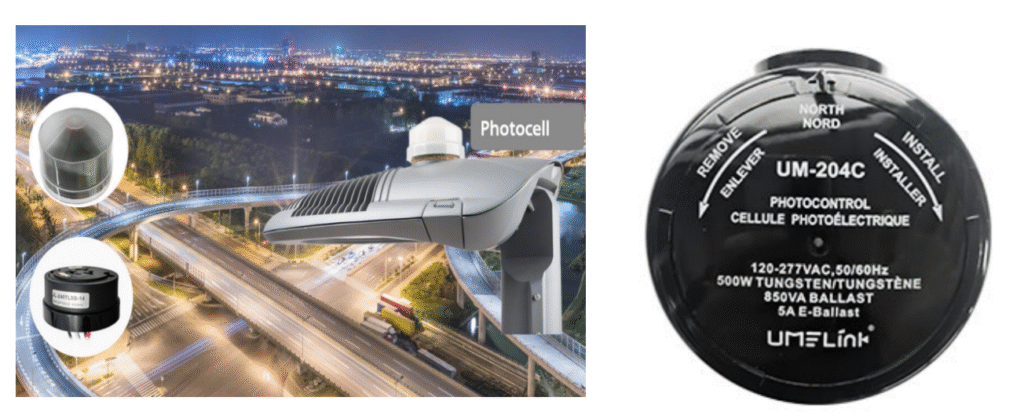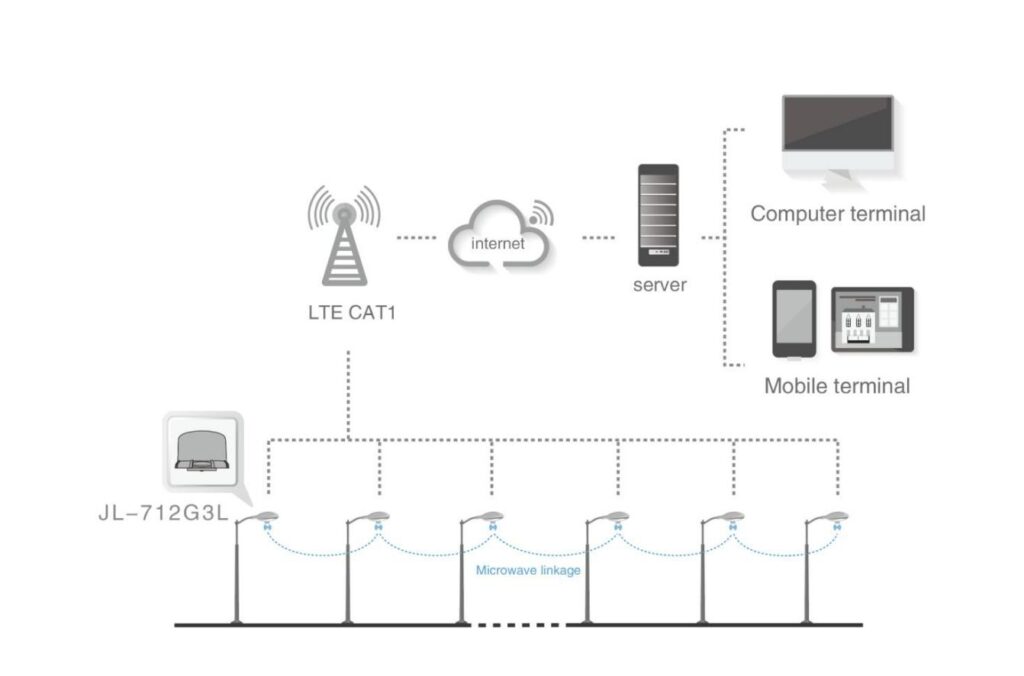Outline
- Introduction
- Fusion Overview: Application of IoT, Big Data, and AI in Lighting Management
- The Role of IoT in Smart Lighting
- Big Data’s Impact
- AI in Action
- Core Functionality Analysis
- Remote Control
- Intelligent Dimming
- Fault Prediction
- Data Analytics
- Success Story Showcase
- Los Angeles’ SmartPoles
- Hamburg’s Smart Road
- Challenges and Considerations
- Future Outlook
- The Bottom Line

Street lighting has undergone remarkable transformations since the time when gas lamps were used, and everything was manual. Early systems were basic, providing only minimal illumination with no control over energy use or maintenance. As cities expanded, electric streetlights became the norm, offering improved brightness and reliability.
Nevertheless, traditional systems still suffer from high energy consumption, regular repairs, and limited adaptability. In modern urban settlements characterized by rapid urbanization, those systems become obsolete due to the demand for faster progress.
The need for modernization is clear. Efficient energy use, responsive controls, and predictive maintenance are no longer luxuries but necessities. This is where smart lighting systems offer a revolutionary approach to street lighting management, transforming cities into smarter, more sustainable urban spaces.
Fusion Overview: Application of IoT, Big Data, and AI in Lighting Management
Innovative technologies like IoT, Big Data, and AI are paramount to revolutionizing urban management. While cost savings are the primary goal in urban development, they effectively address this concern, especially for lighting systems. Below is their detailed discussion.
The Role of IoT in Smart Lighting
IoT’s role is critical in ensuring that light photocells are interconnected through a network of sensors and communication devices. These sensors monitor environmental conditions, not limited to but most importantly the light levels, traffic, and weather.
This allows streetlights to adjust in real-time. For instance, if sensors detect low traffic, lights can dim to save energy. The combination of all these mechanisms guarantees well-managed electricity consumption, all while offering insights for future modification for municipalities. A case in view is Copenhagen where IoT in smart lighting has led to energy savings of up to 50%.
Big Data’s Impact
Big Data enhances decision-making by collecting vast amounts of information from photocell lighting sensors. This data includes energy consumption patterns, maintenance records, and environmental factors.
Analysis of this data offers insights into optimizing lighting schedules, reducing energy waste, and predicting maintenance.
AI in Action
AI is the driving force behind predictive maintenance and energy optimization in smart lighting systems. Machine learning algorithms analyze data from IoT sensors to predict potential failures before they happen.
This reduces downtime and maintenance costs. Further, AI also fine-tunes energy use by learning and adapting to patterns in human activity and environmental conditions. For example, London has implemented AI-driven street lighting, leading to a significant reduction in energy consumption.
Core Functionality Analysis

Advanced smart street lighting systems are more than just illumination. They also offer additional features that improve efficiency, reduce costs, and enhance urban quality of life. Some of them include remote control, intelligent dimming, accident forecasting, and data analytics, which work together to create a responsive and sustainable lighting network.
Remote Control
The remote control is a device that allows city managers to monitor and manage streetlights from a central hub in real-time. It enables immediate adjustments to lighting schedules, fast restoration of power supply after outages, and optimal use of energy.
In Oslo, Norway, the remote management of streetlights has led to energy savings of up to 70% by allowing precise control over when and where lights are on.
Intelligent Dimming
Intelligent dimming changes the brightness of streetlights based on external environmental conditions and human activities around them. This system employs by using light sensors that detect motion or heat concentration by people or cars passing by and variations in climatic factors like rain or shine; such information can then be used to dim down the light bulbs, hence saving electricity while at the same time permitting optimal sight.
Fault Prediction
Fault prediction uses AI and machine learning to detect anomalies in the system, predicting potential failures before they occur. Therefore, these algorithms can sense changes through observation of patterns in sensor data so as to sound alarms that call for prompt intervention by the maintenance crew hence avoiding having idle machines while cutting down their rehabilitation costs.
Data Analytics
Data analytics in smart lighting systems involves collecting and analyzing large volumes of data to derive actionable insights. This includes tracking energy usage, identifying trends in light demand, and optimizing maintenance schedules.
Cities like New York use data analytics to enhance their lighting strategies, leading to a 40% reduction in energy consumption and improved public safety through better-lit streets.
Success Story Showcase

Los Angeles’ SmartPoles
SmartPoles are advanced lighting fixtures that operate with the help of 4G. A genuine-life scenario where these structures are in use in Los Angeles, a city that has employed them to provide lighting while improving its communication network by providing quicker data transmission and large area network coverage.
Because of the energy-saving photocell lighting sensors incorporated within SmartPoles, energy consumption by the city has been reduced by more than 60%. Urban connectivity and public safety will greatly be enhanced by such measures in future smart city applications.
Hamburg’s Smart Road
Hamburg is leading smart street lighting in Europe with its first Smart Road project initiated in 2015. The municipality has made use of intelligent lighting systems that vary their brightness based on current traffic and walking data.
Additionally, the systems have also been fitted with sensors for monitoring air quality as well as noise levels hence providing a greener and smarter urban setting overall. Hamburg’s initiative is a model for other European cities aiming to enhance urban infrastructure through smart technology.
Challenges and Considerations
Smart street light implementation has its own set of challenges. To ensure the successful deployment of smart lighting infrastructure, cities must navigate through concerns like integration complexities and security concerns.
First comes integration complexities. The difficulty arises in retrofitting old appliances with new smart lighting systems. Older systems may not be compatible with modern technologies, thus, requiring significant upgrades or replacements.
Further, Smart lighting systems are vulnerable to cyber threats, making security a critical concern. As these systems are connected to broader networks, hackers can target them, potentially leading to widespread disruptions.
Despite the high initial investment made for the installation of smart lights, these costs usually outweigh subsequent benefits accrued over time. Advantages derived from these kinds of devices include energy savings, reduced maintenance expenses, enhanced security within urban areas, and so on.
Future Outlook
The future of smart lighting is bright, with advancements in technology and urban planning driving innovation. Emerging trends and continuous improvements in smart systems are shaping the cities of tomorrow.
5G is enabling faster and more reliable communication between devices, allowing for real-time data processing and control. Advanced sensors can now detect everything from traffic patterns to environmental changes, optimizing lighting efficiency.
The future of smart lighting management systems will likely see further integration with urban mobility, renewable energy sources, and AI-driven decision-making. Looking ahead, the continued evolution of AI, IoT, and smart grids will further transform cityscapes, making them smarter, safer, and more energy-efficient.
The Bottom Line
Smart lighting represents the future of urban management, offering efficiency, sustainability, and enhanced control. As cities evolve, integrating advanced technologies becomes essential for creating smart, connected environments. For reliable smart lighting solutions like photocells, Chi-Swear stands out as a trusted supplier, providing innovative products that meet the demands of modern urban infrastructure. Choosing Chi-Swear ensures that your lighting systems are both cutting-edge and dependable.
External Links
- https://www.construction21.org/infrastructure/h/smart-sustainable-and-economical-lighting-in-copenhagen.html
- https://www.computerweekly.com/feature/City-of-London-switches-on-to-connected-lighting
- https://www.rcrwireless.com/20171010/fundamentals/oslo-smart-lighting-sustainability-tag23-tag99
- https://www.govtech.com/policy/new-york-hits-goal-of-installing-500-000-led-streetlights
- https://lalights.lacity.org/connected-infrastructure/smart_poles.html
- https://www.techmonitor.ai/technology/data/cisco-hits-the-smartroad-in-hamburg-4592963






